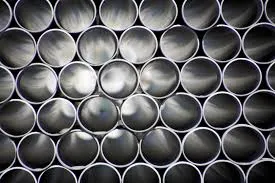
-
 Afrikaans
Afrikaans -
 Albanian
Albanian -
 Amharic
Amharic -
 Arabic
Arabic -
 Armenian
Armenian -
 Azerbaijani
Azerbaijani -
 Basque
Basque -
 Belarusian
Belarusian -
 Bengali
Bengali -
 Bosnian
Bosnian -
 Bulgarian
Bulgarian -
 Catalan
Catalan -
 Cebuano
Cebuano -
 China
China -
 China (Taiwan)
China (Taiwan) -
 Corsican
Corsican -
 Croatian
Croatian -
 Czech
Czech -
 Danish
Danish -
 Dutch
Dutch -
 English
English -
 Esperanto
Esperanto -
 Estonian
Estonian -
 Finnish
Finnish -
 French
French -
 Frisian
Frisian -
 Galician
Galician -
 Georgian
Georgian -
 German
German -
 Greek
Greek -
 Gujarati
Gujarati -
 Haitian Creole
Haitian Creole -
 hausa
hausa -
 hawaiian
hawaiian -
 Hebrew
Hebrew -
 Hindi
Hindi -
 Miao
Miao -
 Hungarian
Hungarian -
 Icelandic
Icelandic -
 igbo
igbo -
 Indonesian
Indonesian -
 irish
irish -
 Italian
Italian -
 Japanese
Japanese -
 Javanese
Javanese -
 Kannada
Kannada -
 kazakh
kazakh -
 Khmer
Khmer -
 Rwandese
Rwandese -
 Korean
Korean -
 Kurdish
Kurdish -
 Kyrgyz
Kyrgyz -
 Lao
Lao -
 Latin
Latin -
 Latvian
Latvian -
 Lithuanian
Lithuanian -
 Luxembourgish
Luxembourgish -
 Macedonian
Macedonian -
 Malgashi
Malgashi -
 Malay
Malay -
 Malayalam
Malayalam -
 Maltese
Maltese -
 Maori
Maori -
 Marathi
Marathi -
 Mongolian
Mongolian -
 Myanmar
Myanmar -
 Nepali
Nepali -
 Norwegian
Norwegian -
 Norwegian
Norwegian -
 Occitan
Occitan -
 Pashto
Pashto -
 Persian
Persian -
 Polish
Polish -
 Portuguese
Portuguese -
 Punjabi
Punjabi -
 Romanian
Romanian -
 Russian
Russian -
 Samoan
Samoan -
 Scottish Gaelic
Scottish Gaelic -
 Serbian
Serbian -
 Sesotho
Sesotho -
 Shona
Shona -
 Sindhi
Sindhi -
 Sinhala
Sinhala -
 Slovak
Slovak -
 Slovenian
Slovenian -
 Somali
Somali -
 Spanish
Spanish -
 Sundanese
Sundanese -
 Swahili
Swahili -
 Swedish
Swedish -
 Tagalog
Tagalog -
 Tajik
Tajik -
 Tamil
Tamil -
 Tatar
Tatar -
 Telugu
Telugu -
 Thai
Thai -
 Turkish
Turkish -
 Turkmen
Turkmen -
 Ukrainian
Ukrainian -
 Urdu
Urdu -
 Uighur
Uighur -
 Uzbek
Uzbek -
 Vietnamese
Vietnamese -
 Welsh
Welsh -
 Bantu
Bantu -
 Yiddish
Yiddish -
 Yoruba
Yoruba -
 Zulu
Zulu
frp step
Understanding the FRP Process Key Steps for Successful Implementation
Fiber Reinforced Polymer (FRP) technology has emerged as a revolutionary material in various fields, particularly in construction and civil engineering. The unique properties of FRP, such as high strength-to-weight ratio, corrosion resistance, and low maintenance requirements, make it an attractive alternative to traditional materials like steel and concrete. However, for successful implementation of FRP solutions, it is essential to follow a series of strategic steps. This article will explore the fundamental steps involved in the FRP process, guiding practitioners through effective deployment.
Step 1 Material Selection
The first step in the FRP process involves selecting the appropriate type of fiber and matrix material. FRP typically consists of a reinforcement phase, which can be glass, carbon, or aramid fibers, and a polymer matrix, such as epoxy, vinylester, or polyester. Each material offers distinct advantages; for instance, carbon fibers provide superior strength and stiffness, while glass fibers are more cost-effective. The choice of material should align with the project's performance requirements, environmental conditions, and budget constraints.
Step 2 Design Planning
Once the materials are selected, the next step is design planning. This phase should involve thorough analysis and modeling to ensure the FRP components will meet the structural integrity and serviceability requirements of the project. Computer-aided design (CAD) tools and finite element analysis (FEA) software can be invaluable for simulating various loading scenarios and assessing the behavior of the FRP system. Close collaboration with engineers and architects during this phase will help address potential challenges before they arise.
Step 3 Manufacturing Process
After design validation, the manufacturing process can commence. There are several methods for producing FRP components, including hand lay-up, vacuum infusion, and pultrusion. The choice of manufacturing process depends on the complexity of the parts being produced and the scale of production needed. Quality control during production is crucial; defects in the bonding process or fiber alignment can lead to reduced performance and failure of the final product.
frp step

Step 4 Installation
The installation of FRP components is critical to the overall success of the project. Proper methods must be employed to ensure the components are securely bonded and positioned as per the design specifications. Depending on the application, installation may involve techniques such as adhesive bonding, mechanical fastening, or encapsulation. Training and certification for construction crews specializing in FRP installation can enhance the quality and safety of the process.
Step 5 Inspection and Testing
Once installed, rigorous inspection and testing are paramount to verify the performance and safety of the FRP system. Non-destructive testing methods, such as ultrasonic or acoustic emission testing, can be used to detect any internal flaws without causing damage to the material. Additionally, field performance assessments should be conducted to monitor the FRP’s behavior under real-world conditions. These measures help validate that the FRP installation meets regulatory standards and design expectations.
Step 6 Maintenance
One of the significant advantages of FRP is its low maintenance requirements; however, periodic inspections are necessary to ensure long-term performance. Establishing a maintenance plan to monitor the condition of exposed FRP components over time can help identify potential issues early and prolong the material's lifespan. Addressing minor repairs promptly can prevent more significant problems and costly repairs in the future.
Conclusion
In conclusion, the FRP process encompasses multiple critical steps, each contributing to the successful application of this advanced material. From material selection to design planning, manufacturing, installation, inspection, and maintenance, a systematic approach is essential. By following these steps, engineers and builders can harness the full potential of FRP technology, delivering durable and efficient solutions for a wide range of applications. As the construction industry continues to evolve and embrace innovative materials, FRP stands out as a frontrunner in achieving sustainable and resilient infrastructures.









